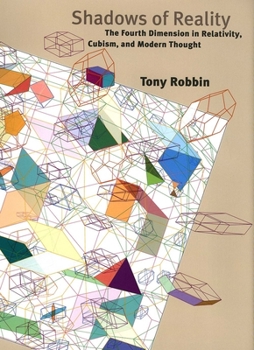Shadows of Reality: The Fourth Dimension in Relativity, Cubism, and Modern Thought
Select Format
Select Condition 
Book Overview
A pioneering artist continues his visionary inquiry into hyperspace In this insightful book, which is a revisionist math history as well as a revisionist art history, Tony Robbin, well known for his innovative computer visualizations of hyperspace, investigates different models of the fourth dimension and how these are applied in art and physics. Robbin explores the distinction between the slicing, or Flatland, model and the projection, or shadow, model. He compares the history of these two models and their uses and misuses in popular discussions. Robbin breaks new ground with his original argument that Picasso used the projection model to invent cubism, and that Minkowski had four-dimensional projective geometry in mind when he structured special relativity. The discussion is brought to the present with an exposition of the projection model in the most creative ideas about space in contemporary mathematics such as twisters, quasicrystals, and quantum topology. Robbin clarifies these esoteric concepts with understandable drawings and diagrams. Robbin proposes that the powerful role of projective geometry in the development of current mathematical ideas has been long overlooked and that our attachment to the slicing model is essentially a conceptual block that hinders progress in understanding contemporary models of spacetime. He offers a fascinating review of how projective ideas are the source of some of today's most exciting developments in art, math, physics, and computer visualization.
Format:Hardcover
Language:English
ISBN:0300110391
ISBN13:9780300110395
Release Date:March 2006
Publisher:Yale University Press
Length:160 Pages
Weight:1.55 lbs.
Dimensions:0.6" x 7.7" x 10.8"
Customer Reviews
2 ratings
Adds a new dimension
Published by Thriftbooks.com User , 16 years ago
Shadows of Reality discusses the 4th dimension in math and art. Robbin is very thorough both in his analysis and his historical explorations. I enjoyed the book a great deal.
A wonderful introduction to the projective approach in math and art
Published by Thriftbooks.com User , 19 years ago
An innovative thinker and a gifted artist, Tony Robbin filters the world of mathematics through the nuances of human vision, creating masterful representations of higher dimensions. His new book stands as a testament to his meticulous scholarship of the history of projective geometry, in mathematics, physics and art. It is a thoroughly enjoyable account of how the notion of finding shadows of the fourth dimension emerged in the 19th century, permeated modern art in the 20th, and now represents one of the frontiers of computer graphics in the 21st. Along the way, Robbin shows how projective geometry could provide the key to a quantum description of gravity. A must read, for the curious anecdotes, cutting-edge science, impressive array of references, colorful art, and insight into how we can perceive the seemingly imperceptible.





